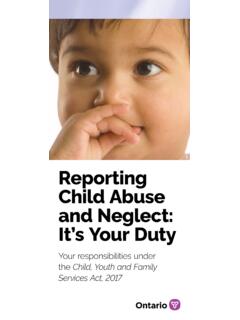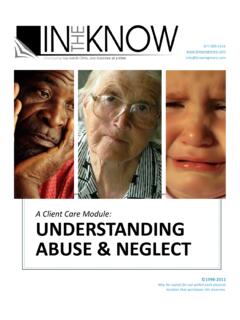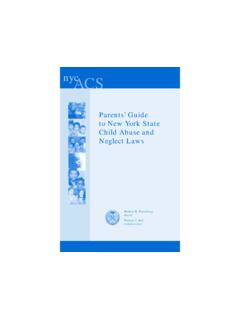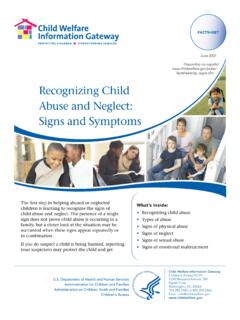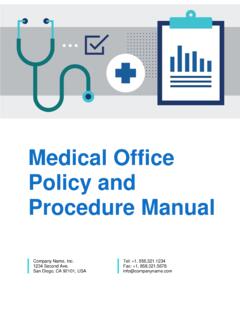Transcription of Child abuse and neglect education module
1 Child abuse and neglect education module Responsibility, recognising and reporting A resource for health professionals Child abuse and neglect education module : For more information contact: Responsibility, recognising and reporting Strategic Policy and Legislation Branch a resource for health professionals Department of Health Queensland Government 33 Charlotte Street Published by the State of Queensland Brisbane QLD 4000. (Queensland Health), October 2018. Email: For a Restrictive Licence Agreement contact: Intellectual Property Officer Department of Health Post: GPO Box 48, Brisbane QLD 4001.
2 This work is licensed under a Government Information Licensing Phone: 07 3708 5069. Framework Restrictive Licence. In essence, use of this material Email: is limited according to agreed permissions and restrictions imposed by the Strategy Policy and Planning Division. Strategic Policy and Legislation Branch welcomes your feedback State of Queensland (Queensland Health) 2018. on this document. If you wish to provide feedback please email SC180053-E 10/18 2. Contents Introduction 4. Target group 4. Reflective exercise 4. Format for developing a case scenario 4.
3 Personal considerations 4. Section 1: Responsibility 5. Objectives 5. Overarching principles 5. National framework 5. Queensland Child Protection Reform Agenda 6. Relevant legislation 7. Reporting responsibilities 7. Legal protection 9. Reflection 9. Section 2: Recognition 10. Objectives 10. Legal definitions 10. Recognising Child abuse and neglect 12. Forming a reasonable suspicion 15. Responding to children, parent/s and carer/s 16. Reflection 16. Section 3: Reporting 17. Objectives 17. Making a report 17. Reflection 21. Referral to support services 21.
4 Right to information 23. Appendix A: Case scenarios 24. Scenario one 24. Scenario two 24. Scenario three 25. Scenario four 25. Child abuse and neglect education module : Responsibility, recognising and reporting State of Queensland (Queensland Health) 2018 3. Introduction Target group Personal considerations This module is available to all health professionals, Responding to children and young people who have specifically those who deliver services to children, been harmed or who are at risk of harm can be young people and adults who have parental/carer demanding and emotionally upsetting.
5 No one is responsibilities in relation to children and young people. immune to the impact of its occurrence or exposure. It will develop your capabilities, including In this module , you may be exposed to content, responsibilities, the ability to recognise, and build scenarios and reactions that you may relate to ( own your confidence to report suspicion of Child abuse experiences as a Child and/or as a parent). If this is the and neglect . case, it is important you seek assistance and support from your colleagues, manager or contact the Employee This module is not intended to support the development Assistance Program (EAP).
6 Please refer to your Hospital of advanced practice. EAP for details about accessing this service should you need support as a result of working through the content Reflective exercise of this module . In this module , you will be asked to answer questions about case scenarios. This will help you apply your learning to an actual clinical situation. You may develop your own scenario based on a clinical situation you have encountered or use one of the scenarios in Appendix A. If you wish to develop your own scenario, please use the format below. If, while writing your scenario, it appears there is insufficient detail relevant to the module , please use one of the scenarios provided in Appendix A.
7 Format for developing a case scenario Please write down as much detail as you can about the following: Who was involved (children, adults, colleagues or agencies)? What were the presenting issues (from the perspective of all key people)? When did you first become aware of this situation and what was the timeline of events (as far as you know) before, during and after your involvement? Where were you working (the agency's role, your role within the agency and other disciplines represented)? 4. Section 1: Responsibility Objectives In addition the Child Protection Act 1999 states the paramount principle for administering the act is to Once you have completed Section 1 you will be able to: ensure the safety, wellbeing and best interests of a Child , 1.
8 Describe your legislative responsibility to report your both through childhood and for the rest of the Child 's life. suspicion of Child abuse and neglect . This paramount principle is underpinned by a number of general principles to guide professionals in ensuring the 2. Describe your specific discipline's professional and/. safety, wellbeing and best interests of the Child . These or competency standards, code of conduct and/or general principles include: ethical behaviours in relation to Child protection. 3. Describe the legislative and policy provisions in a Child has a right to be protected from harm or risk relation to unborn children who may be at risk of of harm.
9 Harm following their birth. a Child 's family has the primary responsibility for the 4. Describe the legislative protections you have in Child 's upbringing, protection and development. reporting your suspicion of Child abuse and neglect . the preferred way of ensuring a Child 's safety and 5. Apply the above points to a specific practice scenario. wellbeing is through supporting the Child 's family. if a Child does not have a parent who is able and willing to protect the Child , the State is responsible Overarching principles for protecting the Child . As adults we have an obligation to ensure our children if a Child is removed from the Child 's family, are protected and cared for so they can grow and consideration should be given to placing the Child , as develop to their full potential.
10 A first option, in the care of kin. the Child should be allowed to develop and maintain The United Nations Convention on the Rights of the a connection with the Child 's family, culture, Child emphasises children have their own rights and traditions, language and community. entitlements, and because of their youth they need extra protection. In line with Australia's obligations as signatory to the Convention on the Rights of the Child National framework the following principles apply: The same principles underpin the Council of Australian all children have a right to grow up in an environment Governments (COAG) endorsed National Framework for free from neglect and abuse their best interests Protecting Australia's Children 2009 2020.










